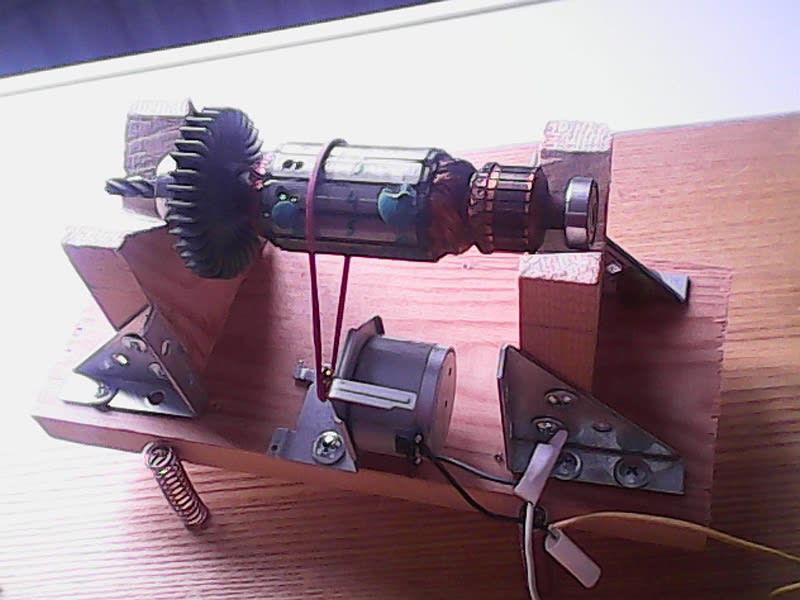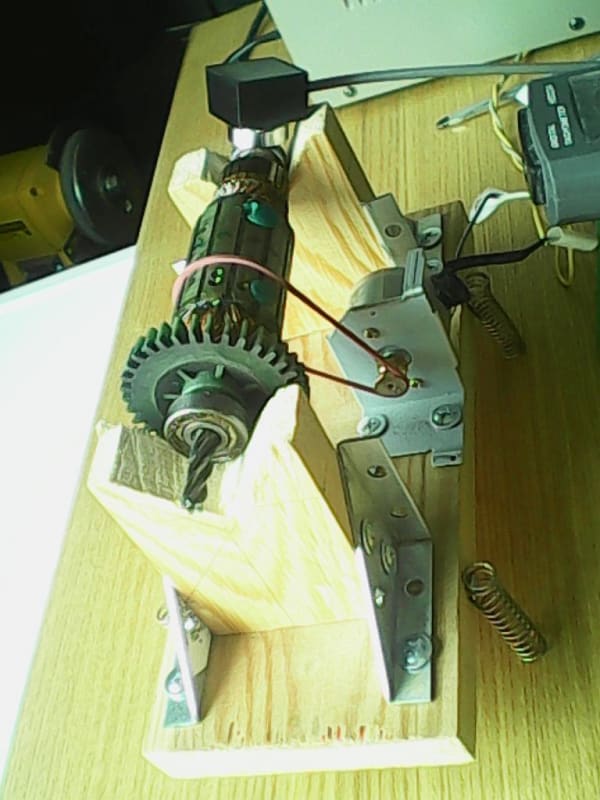I was specifically asked my opinion (a second time) by the op so I gave my honest opinion. That is what I would recommend in our shop.
I'm not particularly interested in debating but since you have repeated your opinion without being asked, I gather you (edison) are attacking my opinion.
So I'll give some points to support my opinion:
[ol 1]
[li]* I said the motor in question is horizontal motor without abnormal 1x. That means it didn't have a balance problem when it came into the shop. If it came in without a balance problem and without dirt on the rotor then it shouldn't have a balance problem when it leaves. If rotor is dirty and needs cleaning then maybe that's a different story which I should have mentioned.[/li]
[li]* An interesting excercize is to compute the load associated with unbalance. Let's say we have 3600rpm 100rpm motor with 6313 bearings whose rotor weight 400 pounds. ISO G1.0 balance spec would be 0.7 inch-ounce total. The centrifugal force from that unbalance at 3600rpm would be about 16 lbf. Let's say your unbalance is 20 times that ISO G1.0. That would be 320lbf. It's still less than the weight of the rotor. Let's add together weight of the rotor and the unbalance it would be 720 pounds totoal or 360 pounds per bearing. The 6313 rating C0 is 13,488 lbf. That loading created by the weight of the rotor plus unbalance at 20x higher than the ISO G1.0 limit is completely insignificant to the bearing life.[/li]
[li]* So why do we worry so much about vibration? Well, if you look at the ratio of force to vibration you'll find misalignment can be a lot higher than unbalance because the misalignment forces includes dc (static) forces which generate no vibration (those dc component of misalignment reaction forces are not detectable through vibration monitoring, but still contribute to beairng loading). The alternating components of misalignment forces which cause vibraton can be a lot lower than the dc components because they arise from secondary effects. If I have a machine with 0.2ips vibration from misalignment and a machine with 0.2ips vibration from unbalance the machine with vibration from misalignment is generating a lot more bearing forces.[/li]
[li]* We have learned to pay attention to vibration for reliability but viewing everything that causes vibration as equally bad is overly simplistic. In reality you'll get a lot more bang for your buck reducing vibration if it was originating from misalignment than if it was originating from unbalance. [/li]
[li]Unlike misalignment, unbalance has no dc component. It can't cause forces without vibration. Unbalance reveals itself in vibration, so it can't hide like misalignment. If there was not high vibration from unbalance when the machine came in then there was also not high forces from unbalance when the machine came in and there's no compelling reason to balance it.
[/li]
[/ol]
I will say these things are not an exact science. There's room for judgement. Just because we've been told something, that doesn't mean it's true without exception. It certainly applies to me and my advice here, but I also believes it applies to the types of things often called good practices because they are handed down from old timers or because
we've always done it that way.
There is a culture in motor shops to take pride in their work and that includes pledging the highest standards in things like unbalance. That makes the repair shop people look like they are thorough and conscientious, and no-one is ever going to fault them for that. And indeed if a repair shop tried to cut corners by skipping rotor balance I'm sure there are customers that would judge them quite harshly for that. So if I were in a repair shop supporting outside customers, I wouldn't even bother recommending to skip balance to a customer, we'd just do it every time (and pass on the cost of course!). But for an in plant shop those perception factors don't matter as much. We have more a focus on reliability and cost and if there is something we are doing that costs but does not add anything to reliability, we will look at reducing it. The incentives and goals are different for in plant shop than customer focused shop. Like I said in my very first post
electricpete said:
"The standards may be slightly different. Repair shops may be held to a higher standard than customers hold themselves to."


